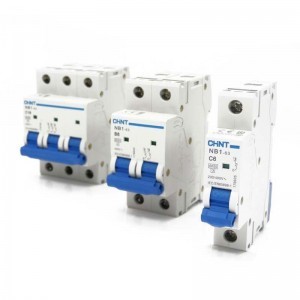Now popularly installed in many residences and small-scale premises, miniature circuit breakers or MCBs can work as both a switch and fuse, opening circuits for safety. When a network becomes faulty or overloaded, an MCB can automatically switch off electric circuits. They are commonly used in low voltage networks, replacing fuses because they are more sensitive. An MCB is safer to handle and is more reliable than a fuse. It does not have to be replaced after correcting a short circuit or a dangerous surge of current. Learn more about miniature circuit breakers and how they work.
Rating
Typical MCBs can carry a maximum current of 2 to 125 Amperes without tripping. For homes, one-pole breakers can protect up to 20-volt circuits while two-poles protect as much as 240-volt circuits. Their voltage rating is never lower but can be higher than the circuit voltage. For transformers that produce 10,000 Amperes of current, breakers should be at least 10,000 Amperes.
How it Works
In a mini circuit breaker, three mechanisms switch it off. These are the bimetallic strip, current coil, and manually operated lever. The current enters through the inlet valve terminal to the bimetallic strip, to the current coil, to the moving contact, and then to the fixed contact and finally leaves through the current power terminal.
If the current flows for a long time through the MCB, the bimetallic strip overheats and deforms. This is called deflection. The deflection causes movement of the latch point. The movement of the breaker is arranged by spring pressure; displacement causes the spring to release and thus make a moving contact and opens the MCB. During a faulty short circuit, the trip coil’s MMF causes the plunger to reach the same latch point and displaces it. If the MCB needs to be switched off manually, the hand-operated lever can be used. After this, the same latch point is displaced and moves the contact separate from the fixed contact, turning off the breaker.
Miniature circuit breakers have arc splitters. When moving and fixed contacts separate, the arcs go up to the arc runner, entering the splitters. When the MCB is on, the disconnected latch is reset to its original position.
Applications
Installing miniature circuit breakers provides protection for homes because they reduce the chance of a fire caused by electricity and save lives. MCBs are used for more recent constructions because they are more reliable. They do not even require wires to install them. Like other breakers, they protect properties from circuit overload because they can effectively manage energy flow by proper distribution of voltage. Some MCBs can be used with ground fault because they have a mechanism that works during line to ground faults. MCBs are also great for home lighting since they can handle the power that can light a home. They also have industrial applications, such as in small-scale buildings and offices that use electric appliances and heaters.
A miniature circuit breaker may be small, but its role is significant, which proves why it is popularly used today. It manages electric circuits efficiently, protecting small-scale premises and homes. MCBs are now found in a wide range of designs. Make sure you choose high-quality ones. Check out https://www.expertelectrical.co.uk for the best solutions.


 What You Should Know Before buying Dimmable LED Lights
What You Should Know Before buying Dimmable LED Lights